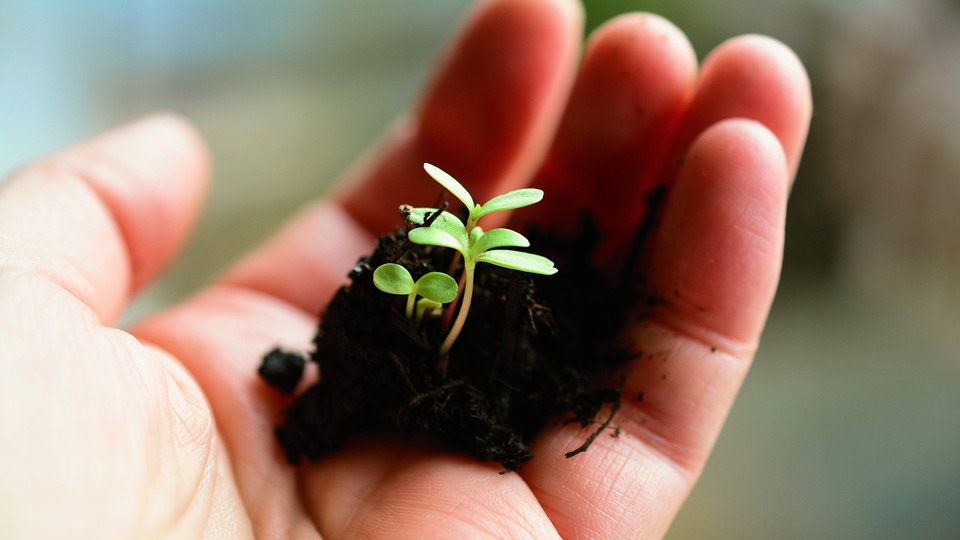
Biota monitoring
ICP Vegetation carries out a variety of different types of monitoring to investigate the impacts on pollution on vegetation with a focus on ozone, heavy metals, nitrogen and microplastics.
Ozone damage
Ozone enters vegetation via the small pores in the leaves (stomata), causing visible injury to develop on the leaves of sensitive plant species. Collection of field-based evidence of ozone damage to vegetation, including biomonitoring experiments, enables the verification of predictions from experiments and models. In 2007, the ICP Vegetation published an Evidence Report detailing widespread ozone damage to vegetation in Europe during the period 1990-2006 under ambient conditions in 17 countries across Europe. Evidence of Widespread Ozone Damage to Vegetation in Europe (1990-2006). External link, opens in new window.
External link, opens in new window.
In 2014, the ICP Vegetation developed a smart-phone App for recording incidences of ozone-induced injury on vegetation. The aim is to create a database of injury records from around the world, adding to the growing list of ozone-sensitive plant species. The app can be freely downloaded, and further information is available here External link, opens in new window..
External link, opens in new window..
ICP Vegetation has also developed a monitoring protocol for setting up a network of 'SOS' (Sensitive Ozone Species) gardens to assess the development of ozone injury symptoms on leaves of sensitive plant species. ICP Vegetation Ozone Garden sand Appprotocol External link, opens in new window..
External link, opens in new window..
More recently, the ICP Vegetation-Asia network has been set up, with the aim of gathering further biomonitoring data on the impacts of ozone on vegetation from Asian countries. Ground-level ozone concentrations in (South-)East Asia are amongst the highest in the world. Biomonitoring experiments with French bean have been carried out in countries including India, Malaysia, Pakistan, Singapore, Thailand and Vietnam. Click here for further details of visible injury symptoms due to ozone.  External link, opens in new window.
External link, opens in new window.
Moss survey
ICP Vegetation also uses mosses to measure atmospheric heavy metal deposition. Mosses, especially the carpet-forming species, obtain most of their nutrients directly from precipitation and dry deposition; there is little uptake of metals from the soil. Heavy metals deposited from the atmosphere tend to be retained by the mosses thereby making sampling and chemical analysis more robust. It is easier and cheaper than conventional precipitation analysis.
Moss surveys have been taking place across Europe since 1990 and the number of participating countries has expanded greatly since then. Surveys are conducted every 5 years. More recently, mosses have also been sampled for nitrogen, Persistent Organic Pollutants (POPs) and microplastic concentrations. Click here for further information on the moss survey protocol External link, opens in new window..
External link, opens in new window..
Vegetation monitoring
ICP Integrated Monitoring carries out vegetation monitoring in two subprogrammes. The first of these, the intensive plot vegetation, aims to obtain sensitive bioindication of changes in pollutant deposition or other atmospheric factors, e. g. warming, by careful monitoring in a relatively small area of changes in which species are present and their abundances. The second, the (optional) vegetation structure and species cover subprogramme aims to follow any major changes in the structure and species composition of plant communities across the whole monitoring site.
The data also serve the needs of plant diversity monitoring of trees, shrubs and field and bottom layer species of the entire catchment. Data are obtained on the dynamics of tree biomass and canopy structure. Data on dead trees, logs and stumps are useful for following the decay process and the dead wood as habitat for fungi, mosses, and insects.
Aquatic biota in acid-sensitive waters
ICP Waters use long-term records of aquatic insects in acid-sensitive rivers and lakes to assess changes in species richness and biological recovery. The aquatic insects that are focused on are EPT taxa (Ephemeroptera (mayflies), Plecoptera (stoneflies), and Trichoptera (caddisflies)). These taxa include many acid-sensitive and the monitoring records are of high taxonomic quality. For further information reference is made to ICP Waters homepage for reports (trend reports and biological intercalibrations) and the ICP Waters manual External link, opens in new window. .
External link, opens in new window. .

